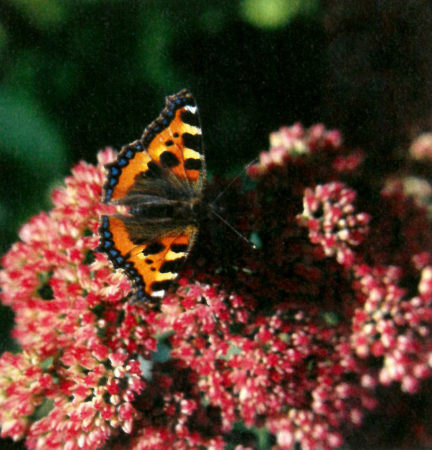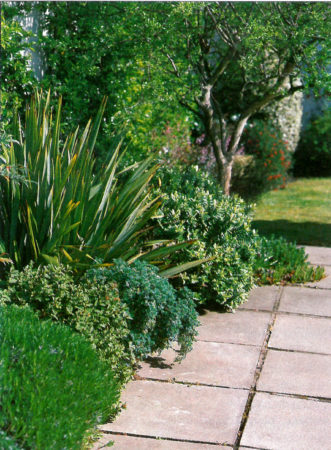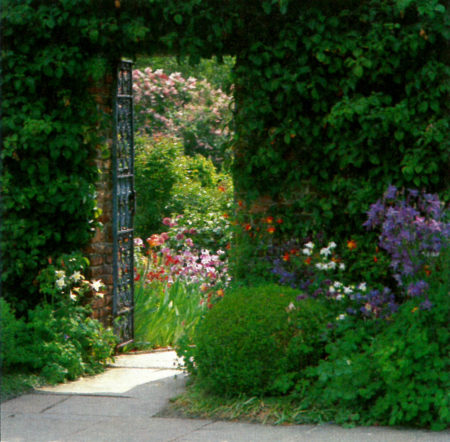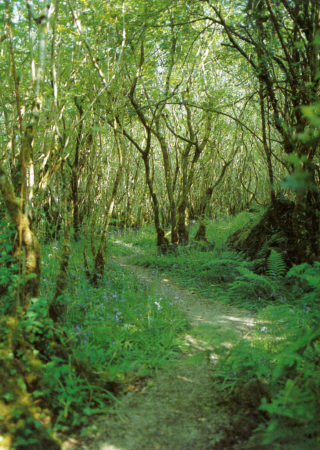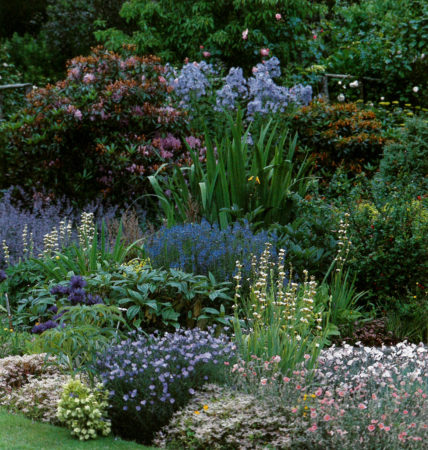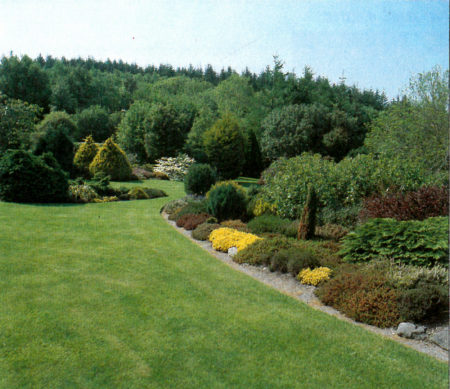Post category: Nature
Though a garden does not immediately come to mind as a wildlife habitat, most of its animal life is every bit as wild and untamed as anything the jungle ever produced – less spectacular that’s all. Even if birds or hedgehogs become used to being fed, they remain wild animals.
Wildlife
Click here to view bigger sized image
Unnoticed hordes of creatures work in the soil, on its surface, and on plants. Some are plant-eaters (herbivores); others are scavengers of dead animal and plant tissue; a few others are carnivores that eat the herbivores. Certain small animals, mainly insects and mites, are parasitic on larger animals, feeding off them or laying eggs in them.
Relatively few insects, and other animals, have managed to breach the formidable defences of plants – thorns, hairs, stings, sticky surfaces, tough skins, poisons. Of the hundreds of animal species found in gardens, very few are truly harmful to plants. Most are there to feed off dead plant material, or off each other.
The relatively small number of harmful insects; greenflies, some caterpillars, a few beetles and grubs, we recognise easily. The ones we have no names for tend to be disregarded. These are the beneficial insects that turn dead plant material into humus and, by and large, control the harmful insects.
Birds are particularly valuable for their predatory role on insects and snails, as well as for their singing. Some insects play a dual role. For example, wasps are a nuisance but they are also implacable predators of caterpillars; earwigs chew holes in flowers but they eat greenflies too.
Trees and shrubs, particularly berried kinds, provide shelter and food for birds. Flowers and other plants encourage insects. A pool encourages slug-eating frogs.
Exotic
Native plants are those which were not introduced by mankind. During thousands of years, they have adapted to the prevailing climate and they are resistant to most local pests and diseases.
Native and Exotic
Click here to view bigger sized image
Although this makes them very reliable garden plants, they are not often used because of their ‘wild’ status, which is a pity because they need no care when given the right conditions. They are particularly valuable for linking a garden with the surrounding ‘wild’ countryside.
Natural landscape
The natural landscape has always inspired gardeners. Hills, forests and lakes – the whole of the natural landscape can be viewed as a great garden. It is just as important to view the garden as part of the landscape. Let the landscape into the garden and make sure the garden fits the landscape.
In an urban landscape, the garden will normally fit in relatively easily. In rural areas, the garden can be used to fit the house into the surrounding countryside and the plants used should not jar with their surroundings. For instance, pink cherries are too artificial for the surrounding countryside. If these are used, they should be contained within the garden.
People are very sensitive to the natural world and this applies to the garden environment too. Our innate sense of danger has a big influence on garden design. We are much more comfortable with our backs to a solid barrier; when looking down from a height; or when hidden from view, looking out.
People and Nature
Click here to view bigger sized image
Any sitting area in the garden will feel uncomfortable unless it is backed by walls, fences, trellis or hedges, even low ones. A barrier is comforting.
Despite high walls, if a sitting area is overlooked, it will feel uncomfortable too. A screen, however flimsy, above eye level provides a good hide-away. A raised terrace, or platform can be uncomfortable if it exposes the sitter, even without being overlooked. However, a terrace with the solidity of the house directly behind feels comfortable.
To lend the garden a feeling of seclusion and comfort, it is very important to provide at least one sitting area that is not overlooked or open. People never sit in the front garden if they have a back garden!
Mountain
The web of life in the garden is as complex and dynamic as any in the wild, natural world. An understanding of the world of plants makes gardening easier and more successful. Plants grow over most of the earth’s land area, from steaming jungles to frozen tundra, even below the ocean surface and at the top of high mountains.
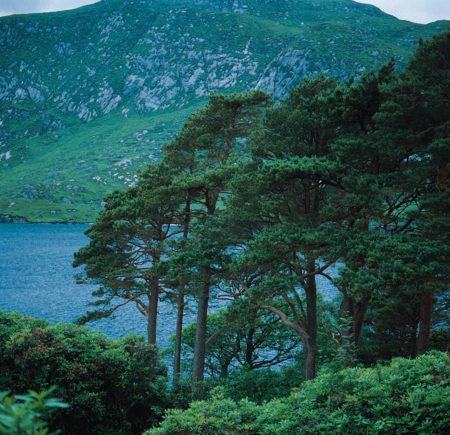
Natural Habitat
Click here to view bigger sized image
The conditions of soil, climate and animal life to which a plant has adapted define its habitat. Plants have adapted to tolerate every kind of habitat, which means that plants exist to suit the conditions in any garden.
Woodland
Woodland conditions are created by the canopy of trees. Height gives the tallest trees first call on available light and moisture; as little as twenty percent of sunshine and rain actually gets through to the forest floor. Deep roots of trees penetrate to the subsoil where plant nutrients unavailable to shallow rooted plants are found.
Natural Habitat
Click here to view bigger sized image
When the leaves fall from the canopy, they smother small plants on the woodland floor, further reducing competition. These advantages have made trees the dominant, or ‘climax’, vegetation across vast areas of the earth’s surface.
Within gardens, every tree or shrub that casts shade; every building that approximates a cliff-face, or wall a boulder, creates woodland conditions. Therefore, we must look to woodland plants to thrive in shady places.
Plants have adapted to take advantage of the trees’ success. Climbers and creepers climb to the top of the tallest trees to get a share of the light. Many woodland plants have dark-green leaves with more chlorophyll to trap the available light. Evergreens have full access to the light when the leaves are off the canopy.
Bulbs come up early in spring to grow and flower before the tall trees are in leaf, and they enjoy the annual mulch of fallen leaves. Ferns enjoy the sheltered, humid atmosphere and protection from the scorching heat of the sun.
Many woodland plants have edible nuts (hazel, beech, sweet chestnut), and fruits (crabapple, cherry, holly, ivy, elderberry) to encourage woodland birds and mammals to carry them to new territory. These plants have attractive flowers and berries and they can be used to attract wildlife to the garden.
Grassland
There are large natural grassland areas where grazing animals prevent the transition to forest by grazing young saplings. Trees and shrubs never get the chance to build up their woody structure. Grasses and herbaceous perennials with stems at ground level, or below it, survive.
Natural Habitat
Click here to view bigger sized image
In the garden, the lawnmower achieves the same effect as grazing animals in nature. Well adapted low-growing perennials survive even better than grasses. These are the weeds of fine lawn – the wild flowers of wildflower meadows.
Moorland
Moorland is flat and windswept with free-draining, poor soil, usually acidic. This land supports heathers, furze and broom; hard, fine-leaved grasses such as fescues; certain trees like birch, pine, mountain ash and juniper.
The plants are wind-resistant and can survive dry conditions. Dry moorland is the model for heather-and-conifer gardens.
Wetland
River’s edge and marshland have provided a lot of interesting garden plants. Woody plants like willow, poplar, alder and dogwood are at home in these conditions; they are adapted to having their roots in damp ground. Sweet flag, kingcups, meadowsweet, purple loosestrife and globeflower are native lovers of damp conditions.
From abroad, there are thousands of excellent garden plants that enjoy such conditions; many of them enjoying partial shade as well because they will usually be competition from trees in such habitats. Astilbes, hostas, bergenias, ligularias, asian primulas, certain irises, easter lily, and hardy geraniums are examples. An area of damp ground need never by a problem with plants like these to grow in it.
Other natural plant habitats
The seashore has its own set of wind and salt resistant plants life thrift, creeping thyme, sea holly, and burnet rose. From foreign seashores come sea buckthorn, olearias, hebes, griselinia, phormium, fuchsia and various pines.
Mediterranean and Middle-eastern countries have large expanses of dry, rocky moorland with sage, thyme, vines, lavender, cistus and many bulbous plants like tulips, cyclamen, foxtail lily, and gladiolus.
The arid desert regions have plants like cacti and succulents specially adapted to tolerate long periods of drought. They make very good windowsill plants indoors. From tropical jungles come plants that are used to heated air and low light – ideal houseplants!
Woodland edge
Most gardens approximate to a woodland edge where grassland joins woodland, and the paved areas are like rock outcrops. In similar natural situations, every type of plant will be represented – trees, climbers, shrubs, perennial flowers, grasses, and annual plants. Plants make layers of vegetation – trees, shrubs, and non-woody plants.
Natural Habitat
Click here to view bigger sized image
Though every sort of plant will be present, it is surprising how few of each type will be found at any one location: four or five kinds of trees, a few climbers, five or six shrubs, perhaps ten non-woody perennial plants and a few annuals.
Several lessons may be drawn from studying natural plant groupings: plants thrive where the conditions suit them; all the ground is colonised by plants – the different types of plants grow together; and wildlife abounds.


